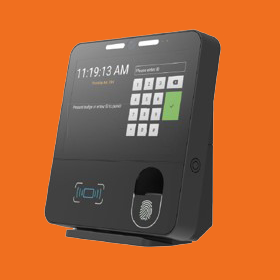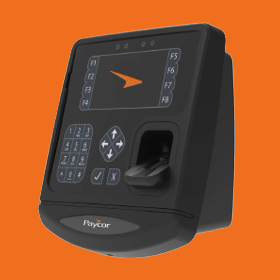There’s a lot riding on your time clock, its reliability, and its ability to report information to your payroll system. The best solutions for time collection and attendance help you analyze labor data on the backend. Just think how important that is. With an accurate picture of employees’ work hours and history, you can balance workloads and cut or add hours as necessary. You can make better labor cost decisions because you have the data.
How Can an Employee Time Clock Improve Workplace Efficiency?
An employee time clock provides a precise and reliable method of tracking employee attendance and hours worked. This eliminates the need for manual timekeeping, reduces errors and ensures that employees are paid correctly for their work. It also helps enforce punctuality and discourage tardiness. With a time clock in place, employees are more likely to arrive on time and adhere to their scheduled work hours. This promotes a culture of accountability and discipline, leading to increased productivity and efficiency.
Streamlining the payroll process is another way a time clock increases efficiency. By automatically recording and calculating employee hours, it simplifies the payroll process and reduces the time and effort required for payroll administration. This not only saves time but also minimizes the risk of errors and ensures compliance with labor laws and regulations.
What Features Should I Look for in an Employee Time Clock?
When looking for an employee time clock system, there are several key features to consider:
- Accuracy and Reliability: Ensure that the time clock system accurately records employee attendance and hours worked.
- Integration and Compatibility: Choose a time clock system that seamlessly integrates with your existing HR or payroll software, allowing for easy data transfer.
- Reporting and Analytics: A good time clock system should provide robust reporting and analytics capabilities. Look for features that allow you to generate reports on attendance, overtime, and other relevant metrics.
- Compliance and Security: Ensure that the time clock system complies with labor laws and regulations, such as overtime calculations and break time tracking. Additionally, prioritize security features like data encryption and user access controls to protect sensitive employee information.
- User-Friendly Interface: Choose a time clock that’s intuitive and easy to use for both employees and administrators.
- Customer Support and Service: Look for a reputable company that offers responsive support and regular software updates to address any issues or concerns that may arise.
How Do I Eliminate Employee Time Theft?
If you’ve ever had an issue with buddy punching or time theft you may need your employees to clock in on-site and in-person. This of course can be logged in a number of ways but to ensure you are getting the most accurate reading from every individual, biometric time clocks may be the best choice.
Requiring finger template or facial recognition safeguards against one employee clocking in for another. Biometric time clocks that integrate with your payroll system will help ensure your employees are paid appropriately for their time, every time. In some environments, especially where employees have dirty hands, a finger template reader is less ideal. In this case, an iPad or tablet with a facial recognition application may be best.

Paycor’s PT800 Time Clock and the Time Kiosk Application uses the latest facial recognition technology to quickly identify employees for touchless time and hour entry. The encrypted file system is secure and available for both Android and iOS tablets.
What are the Benefits of Touchless Time Clocks?
In dirty environments, it’s probably a better idea to consider a contact-free employee time clock. As we continue to face the pandemic, it is more of a risk for everyone to touch the same time clock that may not have been frequently cleaned. In this situation, it may be a good idea to choose a proximity reader. Proximity readers are great for office environments or in places where people have individual badges. Employees can clock in using a badge or proximity card with a chip, barcode, or magnetic stripe.
Paycor’s PT400 connects to badge readers for proximity cards and offers the key features necessary to capture employee punches at the clock. It’s intuitive and has configurable menu-driven applications. It’s also durable, with a robust casing designed to handle various environments.
What Else Can a Time Clock Do?
For workplaces like restaurants or recreation facilities, you may need to provide more information at the clock while maximizing self-service capabilities to your employees that are constantly on-the-go in fast-paced service environments. In this case, it may make sense to choose a time clock that offers a snapshot of employee information in addition to serving as the place to clock-in and clock out. By empowering your employees with access to their information, you can reduce the load of administrative tasks from managers or HR. Enable employees to see a history of their time punches, benefits, or schedules, and even request time off from work.

Paycor’s PT400 maximizes employee self-service capabilities including viewing last punches, benefit balances, and schedules. Employees can also submit time-off requests, provide meal attestation, and enter missed punches. This time clock connects to badge readers for proximity cards or can use PINs.
Remember, you have options. Consider your workplace needs and your employees as you make your choice. The appropriate employee time clock should ensure that employee hours are accurately collected and unified with your HCM solution to enable the analysis of data on the backend. With the appropriate time collection solution, you can keep employees engaged, drive efficiency and track labor costs for your business.









